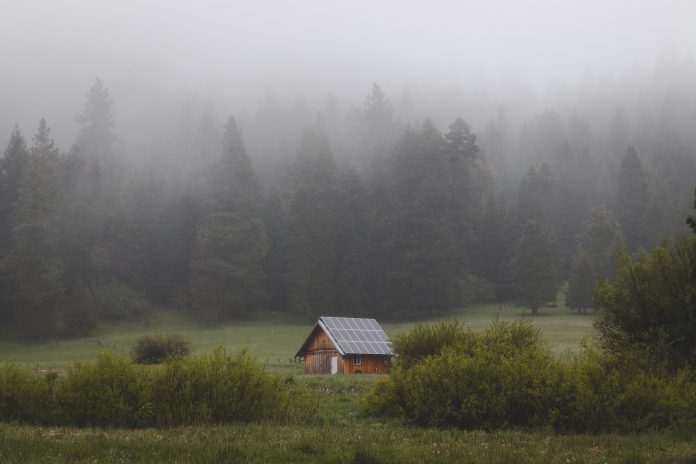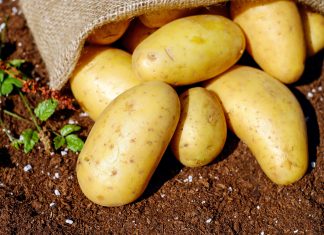A septic tank installation is a self-contained sewage treatment system that is not connected to a public sewage system. It is typically used in rural areas where a public sewage system is not available or in off-grid homes that are not connected to the electricity grid. If you, for some reason, don’t have one yet, then a company like Bruce Johnson Construction offers septic installation in Gresham.
Off-grid septic systems are designed to treat and dispose of household sewage in a way that is safe for the environment and meets local health and safety regulations. A residential septic installation typically consists of a septic tank, a drainfield, and a soil absorption system.
The septic tank is a watertight structure that is buried underground. It is designed to hold and treat raw sewage from the home. As the sewage enters the tank, it is separated into three layers: a top layer of scum, a middle layer of wastewater, and a bottom layer of sludge.
The top layer of scum consists of grease, oil, and other floating materials. The middle layer of wastewater consists of water and dissolved solids. The bottom layer of sludge consists of heavier solids that settle to the bottom of the tank.
The septic tank is designed to allow the scum and sludge to decompose through the action of bacteria. The wastewater is then released from the tank and flows into the drainfield.
The drainfield is a series of trenches or a bed of gravel that is used to filter the treated wastewater. The drainfield is typically located a safe distance from the septic tank to prevent any contamination of the groundwater.
The soil absorption system is a layer of soil that is used to filter the treated wastewater before it is released into the environment. The soil absorbs any remaining contaminants, cleaning the wastewater and releasing it back into the environment.
Off-grid septic systems require regular maintenance to ensure that they are functioning properly. This includes pumping out the septic tank every three to five years to remove the accumulated sludge and scum, and maintaining the drainfield by replacing any damaged or clogged components.
Proper maintenance and septic tank pumping are essential to ensure that it is functioning correctly and safely. Failing to maintain a septic system can result in sewage leaks, which can contaminate the soil and groundwater and pose a health risk to humans and animals.
In conclusion, off-grid septic systems are an effective and environmentally friendly way to treat and dispose of household sewage in areas where a public sewage system is not available. Proper maintenance is essential to ensure that the system is functioning correctly and safely.

Aerobic sewage treatment systems, also known as aerobic treatment units (ATUs), are a type of wastewater treatment system that uses oxygen to break down organic matter in sewage. They are commonly used in areas where a traditional septic system is not feasible, such as in areas with high water tables or poor soil conditions.
Aerobic treatment systems consist of a septic tank and an aerobic treatment unit, which is a separate tank or chamber where the sewage is treated with oxygen. As the sewage flows into the aerobic treatment unit, it is mixed with air and a culture of microorganisms. These microorganisms consume the organic matter in the sewage, breaking it down into simpler compounds.
The process of aerobic treatment results in the production of a small amount of sludge, which is removed from the system and disposed of in an environmentally responsible manner. The treated wastewater is then released into the environment, typically through a series of underground pipes or a surface discharge.
Aerobic treatment systems are known for their efficiency and effectiveness in treating sewage. They are able to remove up to 95% of the organic matter in sewage, as well as harmful bacteria and viruses. They also have a smaller footprint compared to traditional septic systems, making them a good choice for areas with limited space.
However, aerobic treatment systems do require more maintenance and energy compared to traditional septic systems. They need a constant supply of electricity to run the pumps and blowers that provide oxygen to the treatment unit. They also require the use of chemicals to maintain the proper balance of bacteria in the treatment unit.
In conclusion, aerobic sewage treatment systems are an effective and efficient way to treat and dispose of household sewage in areas where traditional septic systems are not feasible. They require more maintenance and energy compared to traditional septic systems, but are able to remove a higher percentage of contaminants from the sewage.

Composting toilets are a type of sewage treatment system that uses natural processes to convert human waste into compost. They are typically used in off-grid homes, recreational vehicles, and other situations where a traditional sewage system is not available or practical.
Composting toilets consist of a toilet bowl and a separate composting chamber, where the waste is collected and allowed to decompose. As the waste decomposes, it is broken down by bacteria and other microorganisms into a nutrient-rich compost.
There are two main types of composting toilets: self-contained and central systems. Self-contained composting toilets are self-contained units that include the toilet bowl and composting chamber in one unit. They are typically small and easy to install, making them a good choice for small spaces.
Central composting systems, on the other hand, have a separate composting chamber that is located away from the toilet bowl. They are typically used in larger spaces and can serve multiple toilets.
Composting toilets require minimal water and energy, making them an environmentally friendly option. They also produce a small amount of compost, which can be used as a natural fertilizer for plants.
However, composting toilets do require regular maintenance to ensure that they are functioning properly. This includes adding a dry material, such as sawdust or wood chips, to the composting chamber after each use to absorb moisture and provide aeration. The composting chamber also needs to be turned regularly to ensure proper decomposition and to prevent odors.
In conclusion, composting toilets are a sustainable and environmentally friendly alternative to traditional sewage treatment systems. They require regular maintenance and the use of dry materials to function properly, but produce a small amount of compost as a byproduct.
-
Public sewage system availability: If you live in an area with a public sewage system, it is typically the most convenient and cost-effective option. However, if you live in a rural area or an off-grid home, you will need to consider alternative options.
-
Soil conditions: The type of soil on your property will impact the feasibility and effectiveness of different wastewater treatment systems. For example, if you have poor soil conditions or a high water table, an aerobic treatment system may be a better option than a traditional septic system.
-
Size and capacity: Consider the size of your home and the amount of wastewater you generate when choosing a treatment system. A larger system may be necessary for a larger home or a property with multiple buildings.
-
Maintenance and energy requirements: Some wastewater treatment systems, such as aerobic treatment systems, require more maintenance and energy compared to traditional septic systems. Consider your budget and the resources you have available for maintenance when choosing a system.
-
Environmental impact: Consider the environmental impact of the different wastewater treatment options available to you. Some systems, such as composting toilets, have a smaller environmental footprint compared to others.
It is important to research and compare the different wastewater treatment options available to you and choose the one that best meets your needs and budget. It may also be helpful to consult with a professional to determine the best option for your specific situation.

Blackwater and greywater systems are types of wastewater treatment systems that are designed to separate and treat different types of household wastewater.
Blackwater is wastewater that comes from toilets and is considered to be the most contaminated type of household wastewater. It contains high levels of bacteria, viruses, and other contaminants that pose a health risk if not properly treated.
Greywater, on the other hand, is wastewater that comes from sources such as sinks, showers, and washing machines. It is considered to be less contaminated than blackwater, but still contains contaminants that need to be treated before it can be safely released into the environment.
Blackwater and greywater systems are designed to separate and treat these different types of wastewater separately. Blackwater is typically treated using a traditional septic system or an aerobic treatment system, while greywater is typically treated using a greywater recycling system.
Greywater recycling systems are designed to filter and disinfect greywater, making it safe for reuse. They can be used to irrigate gardens, flush toilets, and for other non-potable purposes.
Blackwater and greywater systems can be an effective way to conserve water and reduce the strain on traditional sewage systems. They require regular maintenance and may have additional costs associated with them, such as the need for chemicals or electricity to operate.
In conclusion, blackwater and greywater systems are types of wastewater treatment systems that are designed to separate and treat different types of household wastewater. They can be an effective way to conserve water and reduce the strain on traditional sewage systems, but may require additional maintenance and costs.














